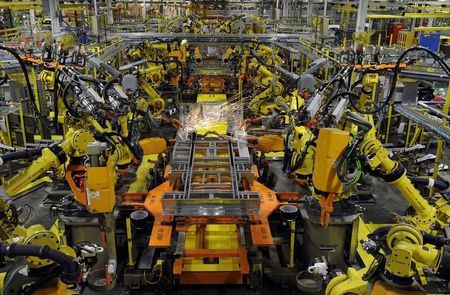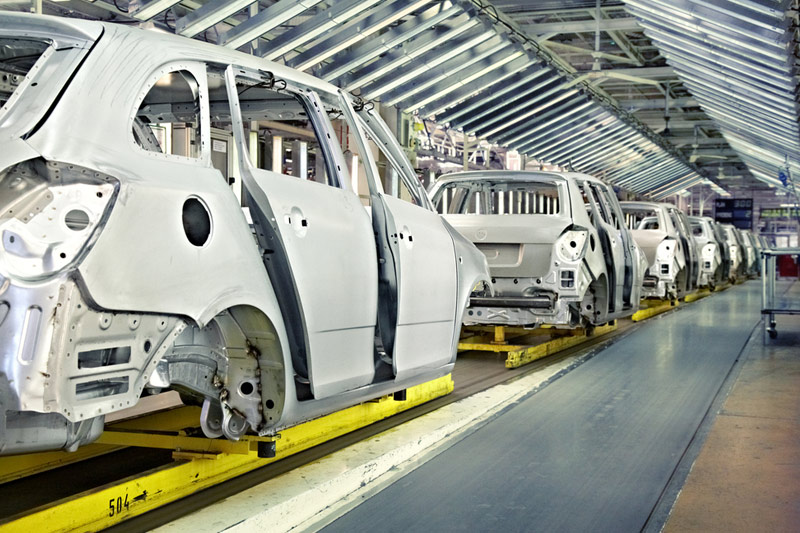By Lucia Mutikani
WASHINGTON (Reuters) - U.S. manufacturing output fell for the first time in seven months in August, but the underlying trend remained consistent with a steadily expanding factory sector.
That view was bolstered by other data on Monday showing factory activity in New York state jumped to its highest level in nearly five years in September.
"The weakness in factory output in August is likely to be transitory," said Millan Mulraine, deputy chief economist at TD Securities in New York.
Factory production dropped 0.4 percent last month as motor vehicle production fell sharply after surging in July, the Federal Reserve said. The drop, which followed a gain of 0.7 percent in July, confounded economists' expectations for a 0.3 percent rise.
Excluding automobiles, manufacturing output gained 0.1 percent in August. So far in the third quarter, factory production is running at a 4.6 percent annual pace, a sign that manufacturing will continue to support economic growth.
Motor vehicle output declined 7.6 percent last month after a 9.3 percent jump in July. Economists attributed the surge in July to difficulties adjusting the data for seasonal fluctuations after some automakers kept assembly lines running instead of closing plants for the traditional summer retooling.
With auto sales at a 8-1/2 year high, motor vehicle production is expected to rebound.
In a separate report, the New York Federal Reserve Bank said its Empire State general business conditions index soared to 27.54 this month, the highest reading since October 2009, from 14.69 in August.
A reading above zero indicates expansion in the region's factory activity. A gauge of new orders rose last month and inventories continued to shrink, keeping the balance between orders and inventories favorable.
GROWING STRONGLY
"If we can be persuaded to look though the volatility of the official data, it's evident that the U.S. economy has continued to grow strongly in the third quarter," said Chris Williamson, chief economist at Markit in London.
Third-quarter growth estimates range as high as a 3.5 percent annual pace. The economy expanded at a 4.2 percent in the second quarter.
With the economic data, including retail sales and housing, continuing to be upbeat, analysts say that could result in a hawkish tilt in the Fed's statement when policymakers conclude a two-day meeting on Wednesday.
"Investors will have to start getting used to the reality that the Fed is going to raise interest rates, most likely during the first half of next year," said Joel Naroff, chief economist at Naroff Economic Advisors in Holland, Pennsylvania.
The dollar was trading higher against the euro and the British pound, while U.S. stocks were mixed. Prices for U.S. Treasury debt rose.
Mining output increased 0.5 percent in August, while utilities production rebounded 1.0 percent.
That helped to cushion the drag from manufacturing, leaving overall industrial production falling only 0.1 percent in August.

The amount of manufacturing capacity in use fell to 77.2 percent last month from 77.6 percent in July, while overall industrial capacity use hit a six-month low of 78.8 percent.
(Reporting by Lucia Mutikani; Additional reporting by Daniel Burns in New York; Editing by Paul Simao)
